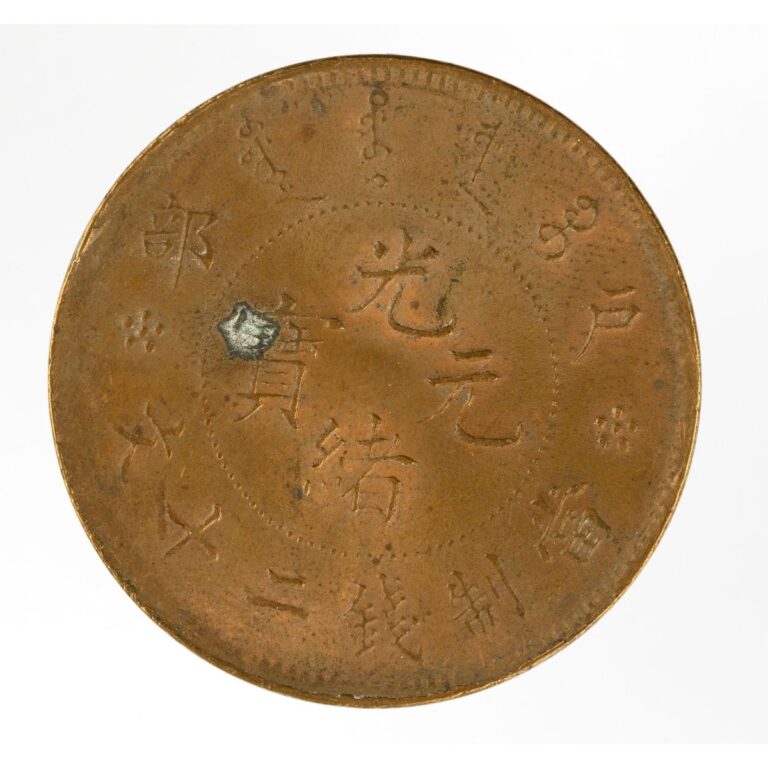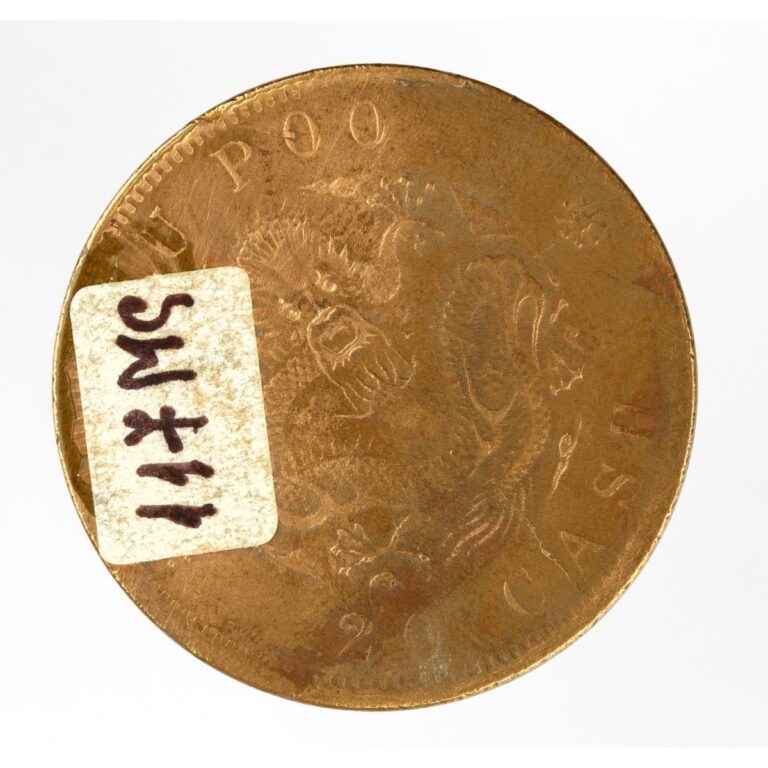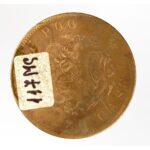Coin Guangxu yuanbao
This Chinese coin bears the inscription Guangxu yuanbao 光緒元寶 on the obverse, indicating that it was minted during the reign of Emperor Guangxu 光緒 (reigned 1875–1908). Although minted in the late imperial period, it is no longer a traditional Chinese coin with a square hole in the centre (fangkong qian 方孔錢), but a modern, machine-made coin. As early as the late 19th century, coins began to be minted by machine in China using Western forging techniques, but due to the high cost and impracticality of implementation, given the circumstances of the time, this method of money production was initially very limited. Only under the last two emperors of the dynasty, Guangxu and Xuantong 宣統 (reigned 1908–1912), and with the increasing influence of foreign capital in Chinese cities, did modern coins gradually prevail over traditional ones. Nevertheless, the latter remained in use among the population until the 1940s, especially in remote rural areas.
Nevertheless, ... more
This Chinese coin bears the inscription Guangxu yuanbao 光緒元寶 on the obverse, indicating that it was minted during the reign of Emperor Guangxu 光緒 (reigned 1875–1908). Although minted in the late imperial period, it is no longer a traditional Chinese coin with a square hole in the centre (fangkong qian 方孔錢), but a modern, machine-made coin. As early as the late 19th century, coins began to be minted by machine in China using Western forging techniques, but due to the high cost and impracticality of implementation, given the circumstances of the time, this method of money production was initially very limited. Only under the last two emperors of the dynasty, Guangxu and Xuantong 宣統 (reigned 1908–1912), and with the increasing influence of foreign capital in Chinese cities, did modern coins gradually prevail over traditional ones. Nevertheless, the latter remained in use among the population until the 1940s, especially in remote rural areas.
Nevertheless, the coin imitates traditional coins in many ways. On the obverse in the centre are the characters Guangxu yuanbao arranged in a square. Above them we see the Manchu script boo ciowan ᠪᠣᠣ ᠴᡳᠣᠸᠠᠨ, and to the right and left are the Chinese characters hu 戶 and bu 部. Both scripts indicate that the coin was minted at a mint that was under the administration and control of the Bureau of Revenue (Hu buju 戶部局) in Beijing. At the bottom of the coin, from right to left, is the Chinese inscription dang zhiqian ershi wen 當制錢二十文, meaning that the coin serves “as a copper coin with a value of 20”. The reverse of the coin features an imperial Chinese dragon with five claws in the centre. Above it is the inscription Guangxu poo, which is the Western transcription of the Chinese Guangxu bao 光緒寶, i.e., “Money of the Emperor Guangxu”. On the bottom is the English inscription 20 cash, which again tells us that it is a coin with a value of 20 monetary units. (MG)





































Do you have a comment or additional information about the subject?